26886 Trachybasalt with augite, Auvergne
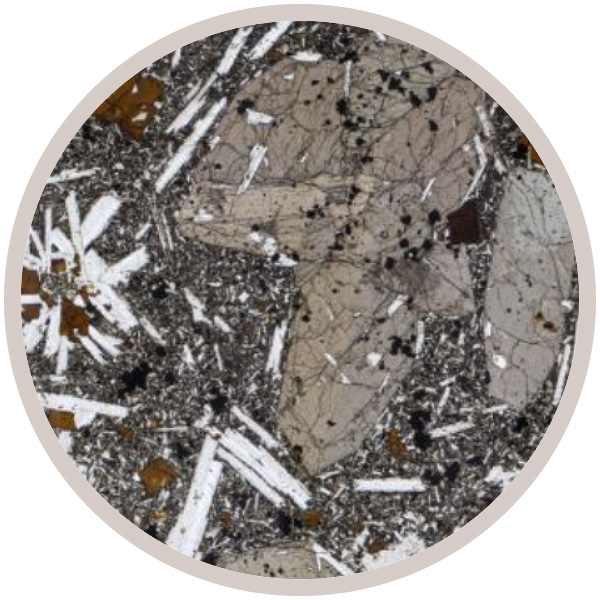

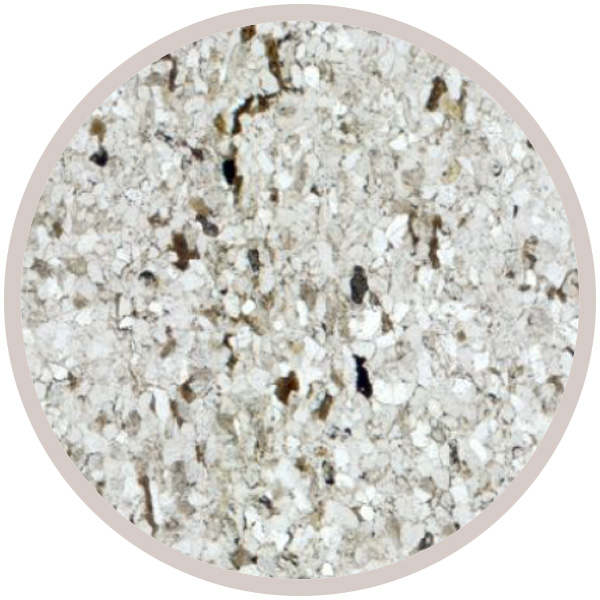
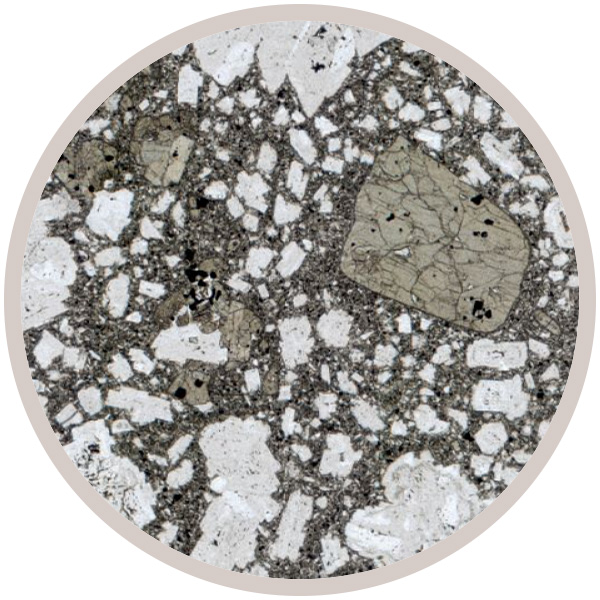
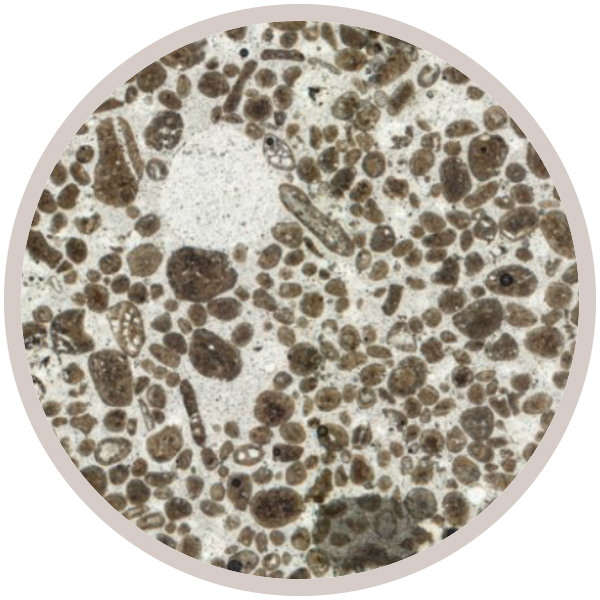
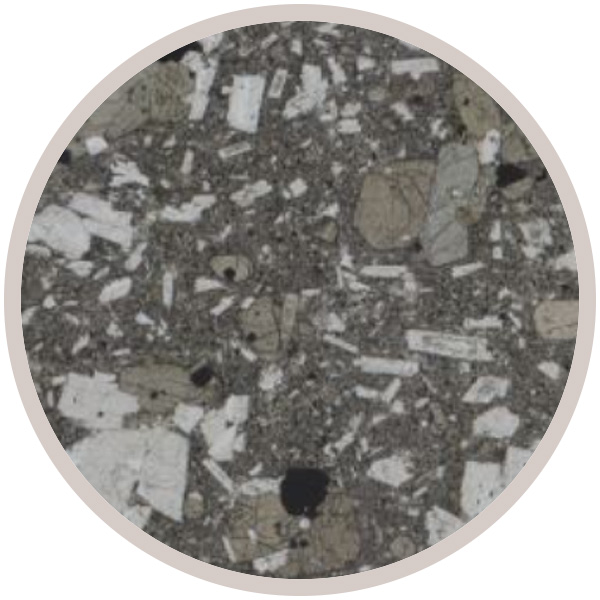
Lunar meteorites are meteorites from the Moon. In other words, they are rocks found on Earth that were ejected from the Moon by the impact of an asteroidal meteoroid or possibly a comet. Meteoroids strike the Moon every day. Any rock on the lunar surface that is accelerated by the impact of a meteoroid to lunar escape velocity will leave the Moon’s gravitational influence. Most rocks ejected from the Moon are captured by the gravitational field of either the Earth or the Sun and go into orbit around these bodies.
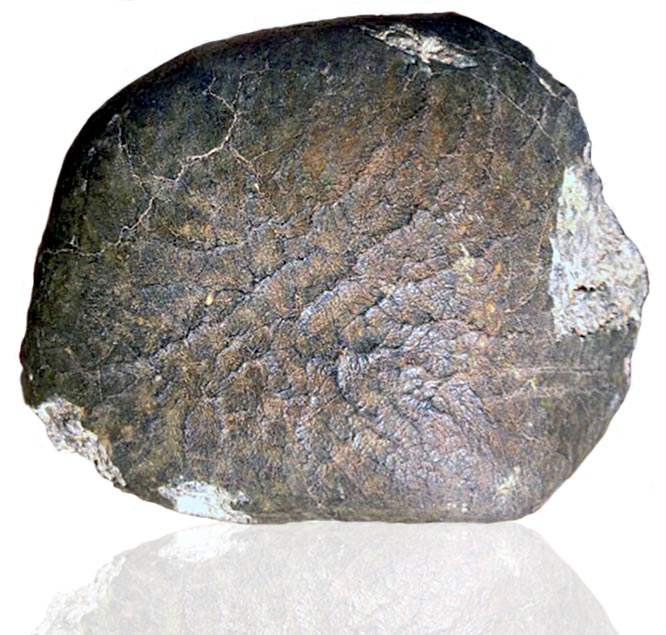
Oued Awlitis 001 (OA 001) is a 7.7 x 6.6 x 3.5 cm brownish-grey lunar meteorite with a preserved, translucent fusion crust that was found as two fitting pieces in 2014 in Morocco/Western Sahara. It is a highly feldspathic, moderately equilibrated, clast-rich, poikilitic impact melt rock.
Its poikilitic texture formed due to moderately slow cooling and displays a poikilitic texture of intensely fractured, mm-sized olivine (Fo56-71) and pyroxene (En42.2-59.4 Fs19.6-41.7 Wo6.4-34.0) crystals that enclose euhedral plagioclase phenocrysts. The olivine and pyroxene oikocrysts are compositionally zoned; olivine exhibits Mg-rich cores and Fe-rich rims, whereas pyroxene displays pigeonite rims and augite cores. This crystallized melt groundmass also envelops partly assimilated, <1 mm, angular to subhedral plagioclase clasts.
Between crossed polars, plagioclase clasts and phenocrysts show reduced birefringence, exhibit strongly undulating extinction, and are partly isotropic. Some plagioclase grains exhibit mechanical twinning. The intense shock metamorphic overprint obscures compositional zoning in the plagioclase and some grains are partially transformed to a diaplectic glass.
Plagioclase clasts and the poikilitic groundmass contain euhedral FeNi metal and troilite grains. Ilmenite and Ti-rich spinel are additional accessory phases.
The chemistry of OA 001 suggests it formed from a ferroan anorthositic precursor rock. It was ejected from the Moon during a meteorite impact event about 300 million years ago.
A detailed study of OUED001 is available here:
https://onlinelibrary.wiley.com/doi/10.1111/maps.13218
Credit: Meteoritics and Planetary Sciences
The images here were acquired from thin section NHMV-O105.
This collection of virtual thin sections is the result of a collaboration between earth scientists at Plymouth University and The Open University. The collection consists of 40 slides from the Plymouth teaching collection, including igneous, metamorphic and sedimentary rocks.
UNDER CONSTRUCTION! This Collection is currently under development, so you may notice reduced functionality as new samples are brought online.
This collection of virtual thin sections is the result of a collaboration between earth scientists at Leicester University and The Open University. The collection consists of 135 slides from the Leicester teaching collection, including igneous, metamorphic and sedimentary rocks.
UNDER CONSTRUCTION! This Collection is currently under development, so you may notice reduced functionality as new samples are brought online.